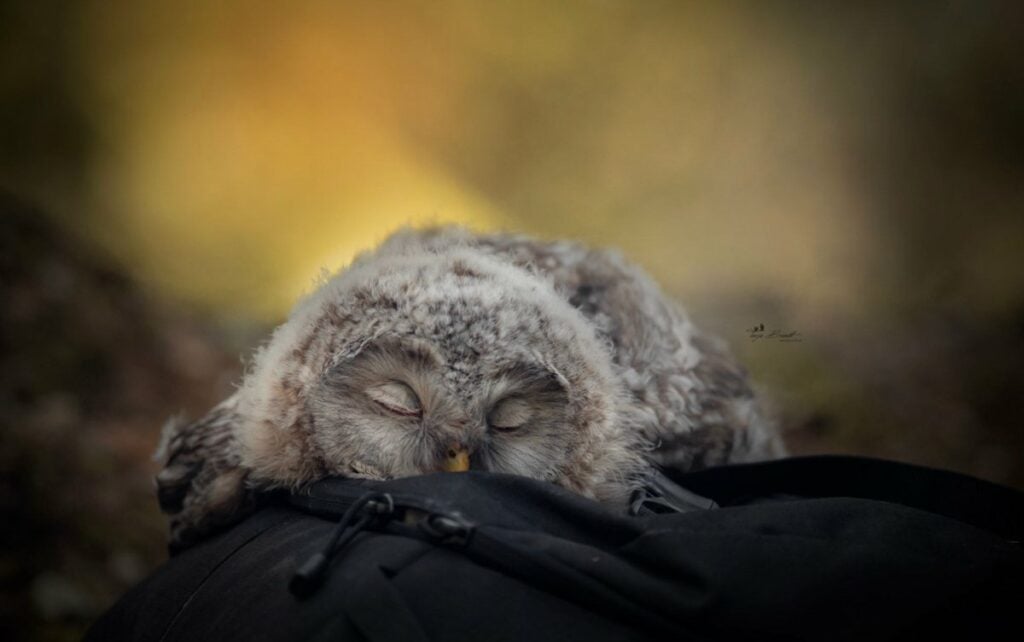Owls belong to the order Strigiformes, which includes approximately 200 species of usually nocturnal and solitary birds of prey with an erect stance, a large, broad head, binocular eyesight, binaural hearing, keen talons, and silent flying feathers. Except for the polar ice caps and a few isolated islands, owls can be found in almost every part of the world. But did you know that owlets have a very unique sleeping position?
The owlets or baby owls, sleep on their stomach because their heads are too heavy for their small bodies to support. They sleep this way until they are big enough to sleep upright.
The Basic Anatomy of an Owl
Owls have large, forward-facing eyes and ear-holes, a hawk-like beak, a flat face, and a facial disc, which is a conspicuous circle of feathers around each eye. This disc’s feathers can be adjusted to sharply focus sounds from different distances onto the owls’ asymmetrically placed ear cavities. Most birds of prey have eyes on the sides of their heads, but the owl’s eyes are stereoscopic, which allows for a greater sense of depth perception especially required for low-light hunting.
Although owls have binocular vision, their eyes, like those of most other birds, are fixed in their sockets. This requires them to turn their entire head around to change their view. Owls are also farsighted, they can’t see anything situated a few centimeters from their eyes. They use filoplumes, which are hairlike feathers on their beak and feet that act as feelers in order to detect prey. However, their far vision is quite exceptional, especially in the dark.
Owls’ feet are zygodactyl, meaning they have two forward-facing toes and two backward-facing toes. Unlike most other zygodactyl birds, they can move one of their back toes forward to help them grip and walk better. They can rotate their necks by 270 degrees. When they move their necks, a blood-pooling system collects blood to power their brains and eyes. (Source: Oiseaux Birds)
Baby Owls and Their Sleeping Positions
Like most birds, owls sleep upright. Owlets or baby owls cannot since their heads are disproportionate to their bodies. Due to the fact that their heads are quite heavy for their body to support, they lie down on their stomachs and turn their heads to their side before falling asleep.
Young owls also sleep this way while they’re resting on branches, and this helps them not fall off. They also use their back toe or hallux to support themselves. (Source: My Modern Met)
How Big are Baby Owls?
Owlets of even the largest owl species like the Great Horned owl or Eurasian Eagle owl are pretty tiny. Some can be as small as 2.5 inches but grow up to be 2.5 feet tall. This is commonly observed in birds of prey. The first few days of life are absolutely crucial in their path to long-term survival.
Larger owlets can reach up to 60 grams in weight by the time they are born. While they weigh more than a duckling, they are still quite small. (Source: Bird Fact)
